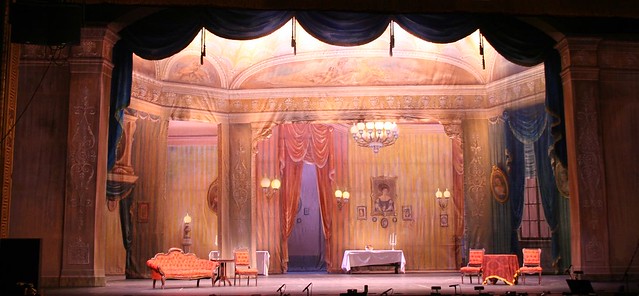Your cart is currently empty!
Underscoring
Underscoring (the process of accompanying speech or action with sound or music) as a science as much as it is an art. It requires a careful understanding of the action onstage and a sensitive tailoring of the music to interweave exactly with the narrative of word and action. Nowadays we are far more familiar with this technique as a filmic convention, but underscoring theatrical scenes involves a set of skills not needed for the predetermined world of the edited film.

Perhaps we should start with a short definition:
Underscoring
Underscoring refers to music which plays underneath dialogue and action, without ‘locking in’ with it or standing on its own. Generally quiet and unobtrusive, it supports the onstage action emotionally and atmospherically. It is not usually heard by the characters onstage.
It is similar to the technique of Melodrama, a form of writing that interlocks musical ideas with complex dialogue or action, but can be seen as a smaller component of melodrama: underscoring does not usually peek it’s head above the ramparts of the dialogue, instead providing a firm emotional foundation.
Techniques
Perhaps the most important factor for the creation of underscoring is volume. Unlike in film music, where you absolute control of volume in recording, live music can easily overwhelm speech if badly written.
Perhaps the best thing to bear in mind is to keep the music as distraction-free as possible. This means not writing jaunty and catchy tunes or distinctively rhythmical accompaniment patterns.
The other area of techniques, aside from compositional, lies in the orchestration. If the spoken word is un-amplified you have to be careful not to overwhelm it with brass or percussion instruments. Some instruments (strings are traditional) are able to play at very quiet dynamics without strongly accented articulation, and so are able to maintain a low sound level over long periods of time. Other instruments such as flutes and some tuned percussion can also sustain quiet passages, but many other reed and brass instruments are difficult or tiring to maintain a consistent quiet pitch. Experimentation and intuition are the key.
Audio technology is often used in a theatrical context because it presents complete control and reliability. A case in point is volume control: unlike acoustic instruments, it is possible to reduce the volume of any recorded sound without significantly altering the timbre. In practical terms this provides composers with increased musical resources for underscoring, as any instruments which would previously dominate a spoken voice (such as a brass fanfare beneath a stirring speech) can be reduced in volume without losing the emotive qualities of the music.
However, using technological shortcuts can often result in a lessening of the impact that well-written underscoring can have. The embodied presence of live musicians interacting and locking in with the emotional arc of the narrative can create a more powerful performance than a accompanying recording. If done well this can be an enormously powerful technique for many different styles of theatre, but is perhaps more difficult in a live and acoustic setting. The challenges are worth it though!

3 responses
[…] include songs, fanfares, dances, montages (although these are closer to underscore), ballets, background radio, jukebox, characters that perform, and other musical works that the […]
[…] the pit was used primarily for non-diagetic music, such as underscoring and feature pieces, while the ensemble was moved into the ‘picture frame’ of the […]
[…] http://theatremusic.wordpress.com/2012/04/17/underscoring/ […]